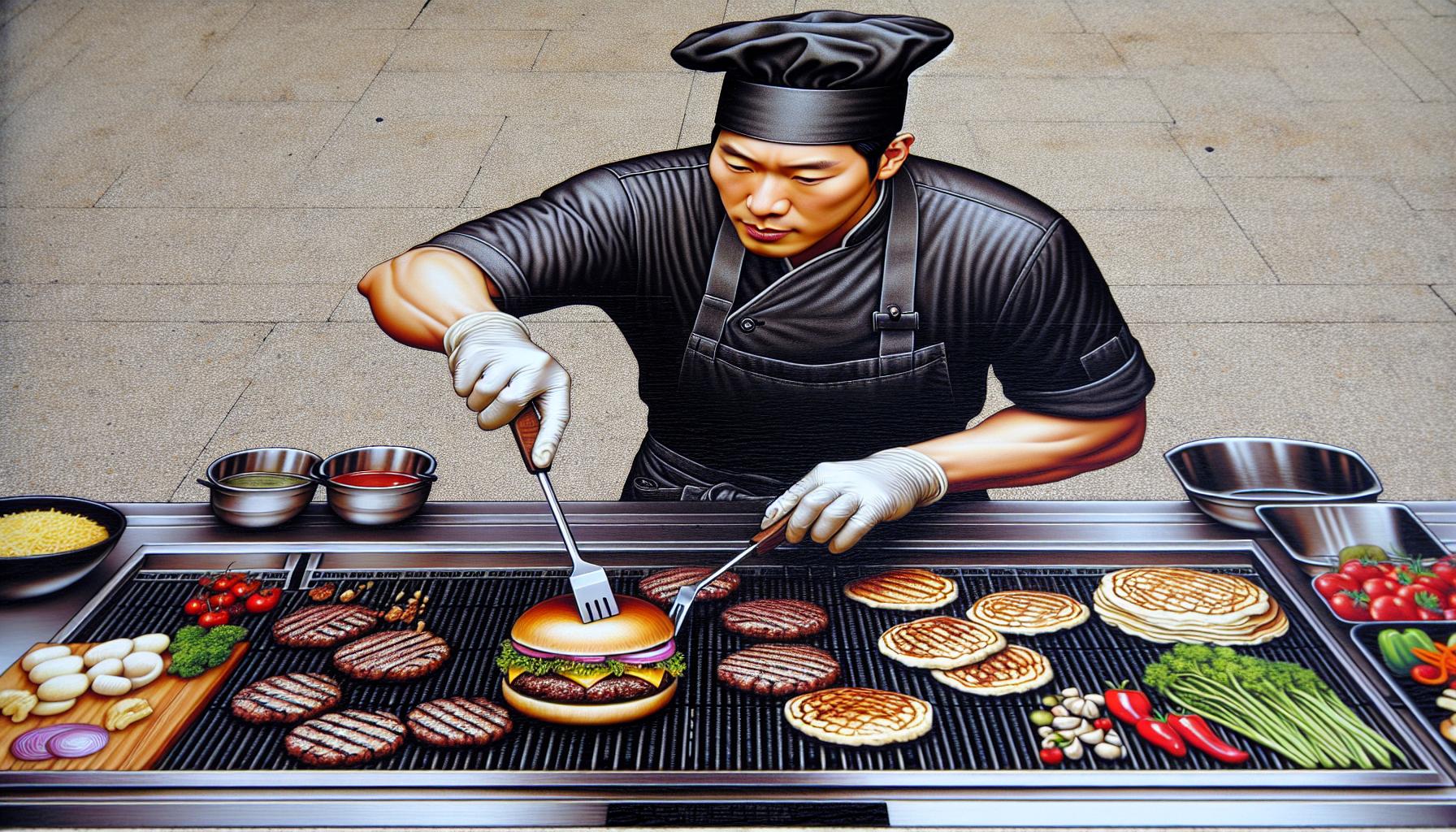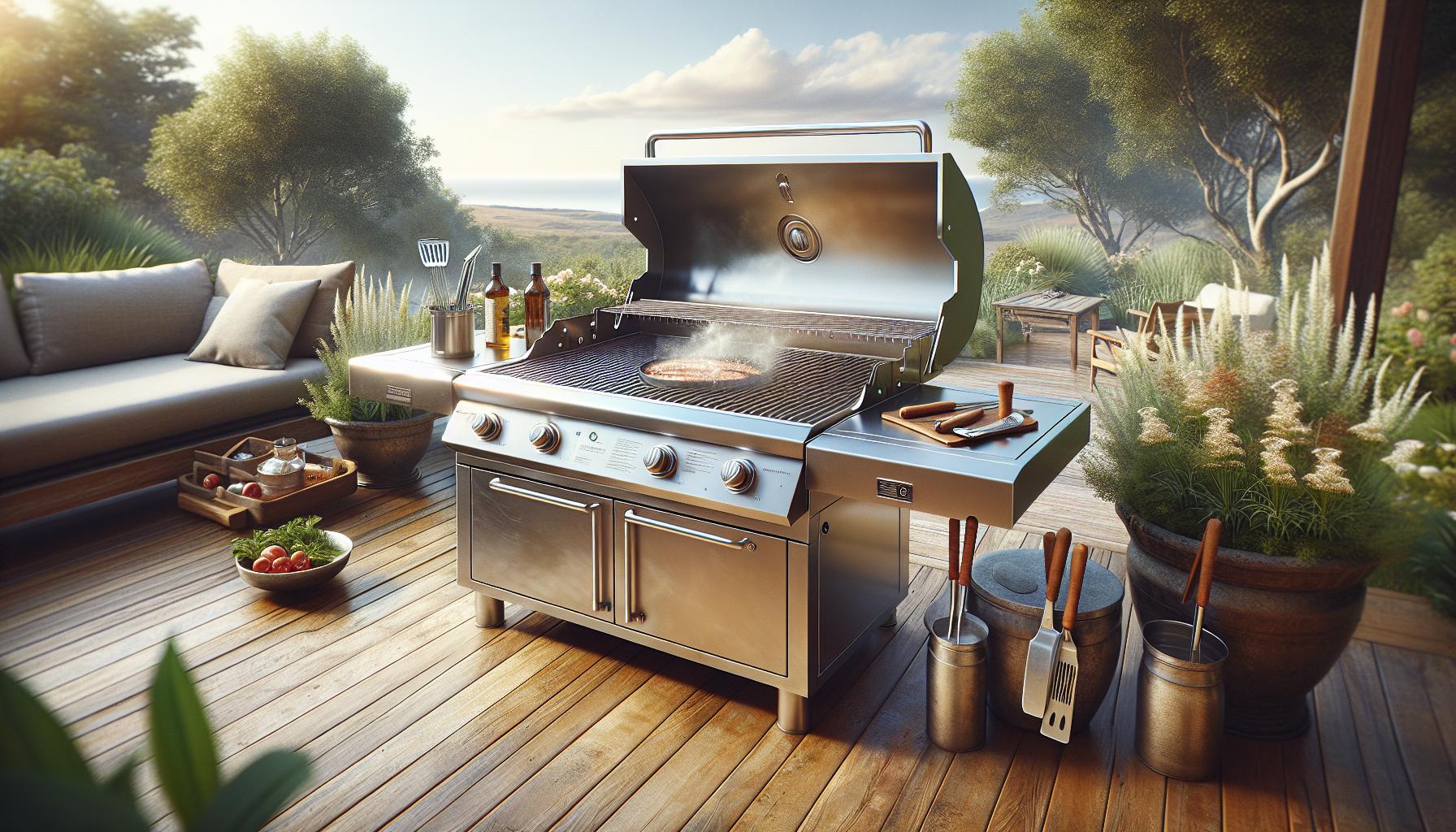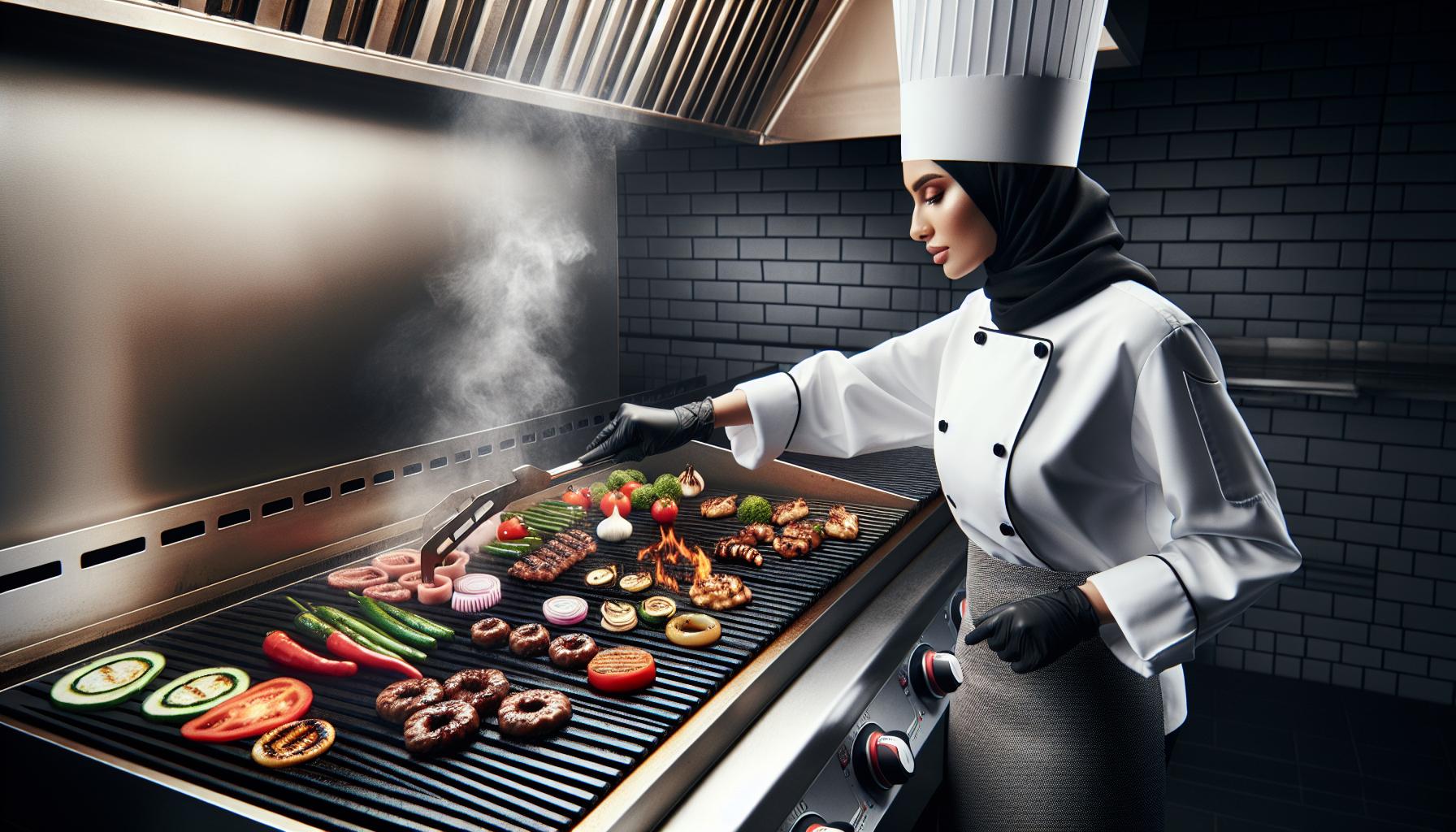Mastering the flat top grill cooking tips and techniques is like conducting a culinary symphony where sizzling sounds and mouthwatering aromas come together in perfect harmony. This versatile cooking surface has become increasingly popular among home chefs and backyard warriors looking to channel their inner hibachi master.
Whether it’s crafting the perfect smash burger searing fresh vegetables or whipping up a breakfast feast a flat top grill offers endless possibilities. But like any cooking method there’s an art to achieving those restaurant-quality results. From proper temperature control to essential tools and maintenance knowing the right techniques can transform an ordinary meal into an extraordinary dining experience.
Flat Top Grill Cooking Tips and Techniques
A flat top grill features a large continuous cooking surface made of thick steel or chrome. Unlike traditional grills with grates, the solid flat cooking surface distributes heat evenly across its entire area.
The cooking surface measures between 28 to 72 inches wide with raised edges to contain food items. Professional models use commercial-grade stainless steel plates ranging from 1/2 inch to 1 inch thick.
Key components of a flat top grill include:
- Heating elements positioned beneath the cooking surface
- Temperature control zones for managing different heat areas
- Grease management system with built-in channels
- Side walls to prevent food from falling off
- Adjustable legs for leveling the cooking surface
Temperature ranges on flat top grills extend from 200°F to 600°F, allowing for diverse cooking methods:
- Low heat (200-300°F): Delicate foods like eggs vegetables
- Medium heat (350-400°F): Pancakes sandwiches quesadillas
- High heat (450-600°F): Steaks burgers stir-fry dishes
The flat surface structure differs from traditional grills in several ways:
- Creates a consistent sear without flare-ups
- Retains cooking oils juices for enhanced flavor
- Enables cooking of smaller items that might fall through grates
- Provides space for multiple dishes simultaneously
This specialized equipment combines elements of a griddle commercial plancha while offering greater temperature control portability. Restaurant kitchens often utilize flat top grills for high-volume cooking breakfast service teppanyaki-style presentations.
Essential Tools and Equipment

Successful flat top grill cooking tips and techniques depends on having the right tools at hand. Professional chefs select specific equipment to maximize cooking efficiency and maintain the cooking surface.
Spatulas and Scrapers
A set of commercial-grade stainless steel spatulas forms the foundation of flat top grilling. Long-handled metal spatulas with beveled edges enable precise food manipulation while protecting hands from heat. Two spatulas create the perfect smash burger technique: one for pressing and another for flipping. Heavy-duty scrapers with comfortable grips remove stuck food particles and assist in cleaning. Essential spatula types include:
- Straight-edge spatulas for general cooking tasks
- Wide spatulas for pancakes and delicate items
- Corner scrapers for cleaning tough spots
- Chopper-scrapers for breaking up ingredients
Temperature Control Tools
Infrared thermometers measure surface temperatures instantly across different zones of the cooking surface. Digital probe thermometers verify internal food temperatures for food safety and optimal doneness. Key temperature monitoring equipment includes:
- Infrared thermometer with temperature range of 0°F to 750°F
- Digital instant-read probe thermometer
- Grill surface thermometer strips
- Heat-resistant gloves rated for 450°F
- Even heat distribution
- Proper cooking temperatures
- Consistent results
- Safe food handling
Preparing Your Flat Top Grill

Proper preparation ensures optimal cooking performance on a flat top grill. The cooking surface requires specific care techniques to maintain its non-stick properties and prevent rust formation.
Initial Seasoning Process
The seasoning process creates a protective layer on the flat top grill’s cooking surface. Here’s the step-by-step process:
- Clean the surface thoroughly with hot water
- Heat the grill to 350°F
- Apply a thin layer of high-smoke point oil (grapeseed, avocado, or flaxseed)
- Let the oil heat until it starts smoking
- Wipe the surface with paper towels using tongs
- Repeat the oil application process 3-4 times
The seasoned surface develops a dark patina, indicating proper protection against oxidation. This process enhances heat distribution and creates natural non-stick properties.
Cleaning and Maintenance
Daily cleaning practices protect the flat top grill’s cooking surface and extend its lifespan:
- Scrape food debris while the surface remains hot
- Pour water on the hot surface to steam clean stubborn residue
- Wipe the surface with a grill stone or scrubbing pad
- Apply a light coat of oil after each cleaning
- Cover the grill when not in use
Regular maintenance tasks include:
- Inspecting grease management systems weekly
- Checking gas connections monthly
- Testing temperature controls quarterly
- Examining burners for even heating patterns
The clean grill surface prevents flavor transfer between dishes and maintains consistent cooking results.
Basic Cooking Techniques

Flat top grill cooking techniques require mastering heat control and surface management. Proper technique creates consistent results across various food types while maximizing flavor retention.
Heat Zone Management
Flat top grills feature multiple heating zones for temperature control across the cooking surface. Creating distinct temperature zones enables simultaneous cooking of different foods:
- Hot Zone (400-600°F): Positioned in the center for searing meats
- Medium Zone (300-400°F): Located adjacent to hot zones for cooking vegetables
- Low Zone (200-300°F): Placed at the edges for keeping food warm
Professional chefs rotate food between zones based on cooking requirements:
- Move thick proteins from hot to medium zones after searing
- Transfer vegetables from medium to low zones once tender
- Position delicate items like eggs in medium zones
- Use cool zones as temporary holding areas during batch cooking
Oil and Seasoning Usage
Proper oil application enhances heat transfer and prevents sticking on flat top grills. Oil selection affects both cooking performance and flavor development:
Key oil application techniques:
- Apply oil in thin layers using squeeze bottles
- Add oil before placing food on the surface
- Use high smoke point oils (avocado, grapeseed, canola)
- Reapply oil between batches as needed
- Season new surfaces with 3-4 layers of oil
- Maintain seasoning through regular cooking
- Clean without harsh soaps to preserve coating
- Re-season spots that show signs of wear
Popular Foods to Cook
The flat top grill excels at preparing diverse dishes across multiple cuisines. Its versatile cooking surface accommodates everything from classic breakfast items to gourmet sandwiches with precise temperature control.
Breakfast Classics
The flat top grill creates restaurant-quality breakfast dishes with consistent results. Eggs cook evenly at 300°F on the griddle surface, whether scrambled, over-easy, or in an omelet form. Hash browns develop a golden-brown crust at 375°F while maintaining a tender interior. French toast benefits from the consistent 350°F heat distribution, resulting in uniform caramelization. Pancakes achieve perfect browning at 375°F without burning, thanks to the controlled surface temperature. Professional cooks use dedicated zones on the flat top for simultaneous preparation of multiple breakfast components: eggs in one area, bacon at 400°F in another, and pancakes in a third zone.
Burgers and Sandwiches
Smash burgers reach their full potential on a flat top grill heated to 400°F, creating a perfect crust through direct contact with the hot surface. Professional cooks press 4-ounce portions of ground beef onto the grill for 60-90 seconds per side. Grilled cheese sandwiches develop optimal color at 350°F, creating melted interiors with crispy exteriors. Philly cheesesteaks cook efficiently at 375°F, allowing meat to sear while onions caramelize alongside. Patty melts benefit from dual-zone cooking: searing the burger at 400°F then assembling the sandwich to grill at 350°F. The flat surface provides even heat distribution for consistent results across multiple sandwiches.
Professional Tips and Tricks
Professional chefs employ specific techniques to maximize flat top grill efficiency. These methods transform basic cooking into expertly executed meals through precise temperature management and strategic food placement.
Temperature Control Methods
Temperature mastery on a flat top grill relies on creating distinct cooking zones. Hot zones (400-450°F) excel at searing meats, while medium zones (300-350°F) cook vegetables efficiently. Professional chefs maintain a warm zone (200-250°F) for holding finished items. Digital infrared thermometers enable precise surface temperature readings across different zones. Creating temperature barriers involves leaving 4-6 inches between zones to prevent heat transfer. Experienced chefs test surface temperatures by dropping water droplets – proper searing temperature causes droplets to dance across the surface. Strategic placement of metal rings or cooking dividers helps maintain separate temperature zones for simultaneous cooking of multiple items.
Food Organization Skills
Professional chefs organize ingredients in specific zones based on cooking times and temperatures. Raw proteins occupy designated areas away from ready-to-serve items to prevent cross-contamination. Metal containers with prepared ingredients line the back edge of the grill for easy access. Chefs arrange tools in a clock-pattern layout: spatulas at 3 o’clock, scrapers at 6 o’clock, tongs at 9 o’clock. Hot zones typically occupy the left side for right-handed chefs, with cooler zones progressing right. Foods with similar cooking temperatures group together in specific zones. Completed items move to a designated finishing area with warming racks or heated plates to maintain optimal serving temperature.
Common Mistakes to Avoid
Overcrowding the cooking surface leads to uneven cooking temperatures across different zones. Space ingredients at least 2 inches apart to maintain consistent heat distribution.
Using incorrect cooking oil temperatures reduces searing effectiveness. Oils smoke at specific temperatures: vegetable oil at 400°F, avocado oil at 520°F, coconut oil at 350°F.
Metal utensils with sharp edges scratch the flat top surface. Select flat-edged spatulas, scrapers with rounded corners, or silicone tools to protect the cooking surface.
Improper cleaning techniques damage the seasoned surface:
- Cleaning with soap removes protective seasoning
- Using ice causes warping from thermal shock
- Scrubbing with abrasive materials creates scratches
- Leaving moisture leads to rust formation
Temperature management errors impact food quality:
- Starting cooking before proper preheating
- Failing to adjust heat zones for different foods
- Ignoring temperature recovery time between batches
- Missing hot spots on the cooking surface
Cross contamination occurs through:
- Using same utensils for raw meat and vegetables
- Storing cooked food near raw ingredients
- Neglecting to clean surfaces between different foods
- Mixing marinades without proper separation
Oil application mistakes create sticking issues:
- Adding cold oil to hot surfaces causes splatter
- Using too much oil pools around food
- Applying oil unevenly creates hot spots
- Selecting oils with low smoke points burns food
- Skipping post-cooking cleaning
- Ignoring grease trap maintenance
- Neglecting surface seasoning
- Storing without proper coverage
Powerful Culinary Tool
Mastering flat top grill cooking tips and techniques opens up a world of culinary possibilities for home chefs and outdoor cooking enthusiasts. With proper temperature control knowledge proper tool selection and consistent maintenance practices anyone can achieve restaurant-quality results right in their backyard.
The versatility of a flat top grill makes it an invaluable addition to any outdoor kitchen setup. Whether it’s perfectly seared smash burgers crispy hash browns or professionally prepared stir-fry dishes this cooking surface delivers exceptional results every time.
By following proper techniques and avoiding common pitfalls cooking enthusiasts can transform their flat top grill into a powerful culinary tool that’ll serve them well for years to come.

